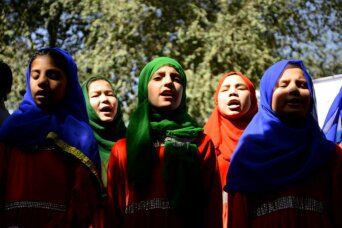- About
- Topics
- Picks
- Audio
- Story
- In-Depth
- Opinion
- News
- Donate
- Signup for our newsletterOur Editors' Best Picks.Send
Read, Debate: Engage.
| topic: | Peace and Reconciliation |
|---|---|
| located: | Afghanistan |
| editor: | Shadi Khan Saif |
There is no doubt that parallel to the relentless spate of violence, the troubled peace process in Afghanistan had never this close to the eventual realisation of the long-cherished dream.
Never before had the discourse between the warring factions taken place publicly. Now, following the days of deadly and bitter enmity among leaders of the Taliban and the government and the secretly brokered behind-the-door contacts, the Afghan peace process has finally reached the point of face-to-face meetings in foreign capitals with the sworn enemies of the past sharing a table for talks.
One wonders what it would take for leaders on both sides - the Afghan government and the Taliban - to hold such sessions within the country on a regular basis (for the sake of a nation that has been suffering for decades), forego the use of violence and earn people’s hearts through their will and vote.
Having said that, from this point onwards - when the US, the Taliban and Afghan government get into the real and challenging talks regarding power sharing - the peace delegates from all sides need not confuse the people’s desire for peace with their factional and personal agendas - whatever they may be.
A ceasefire and peace deal shall end the miseries of the past decades and serve as a starting point for all political movements, groups and societies to resume their endeavors using clearly defined and mutually-respected rules on an even playing field. The public’s will should set the course of the country’s future.
It was these personal and factional agendas of certain warlords, militant leaders and parties that kept the negotiation process hostage for years, as the common people were, forcefully, kept silent on the fringes.
The capital, Kabul, saw thousands of people, men and women, rally for a ceasefire and peace last Friday.
This is what they have been demanding in towns and villages all across the landlocked country. It is both cruel and naïve for the warring factions, as well as pressure groups and individuals on the government side, to impose their will through force and fear on the people.
Image: Casey Johnson via U.S. Institute of Peace.

